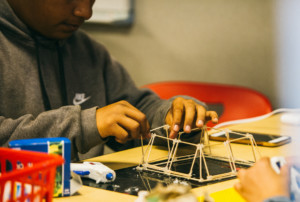Why Do Human Beings Engage? 26 Impulses That Sustain Engagement

I’d like to capture and keep your attention for about 60 seconds while you read this post. I’d like you to feel strongly enough about the topic that you share it with others on social media. I’m relying on your professional curiosity and commitment to impact. In other words, I’m betting on a short burst of engagement.
Human beings engage in a task for many different reasons. Educators, marketers, retailers and game developers all seek engagement. For an educator, engagement leads to persistence and achievement. For game developers and marketers, engagement leads to stickiness, conversions and renewals. Companies want to engage their employees to improve service boost productivity.
Software developers obsess over user experience (UX) and seek enhanced satisfaction by improving the usability, accessibility, and pleasure provided in the interaction with the product.
Retailers think about customer experience (CX) including attraction, awareness, discovery, cultivation, advocacy, and purchase and use of the products and services. A growing number of educators are beginning to think about learner experience (LX) — how students engage and participate with their work, learning, and school community. All of these investigations focus on the impulse for creating and sustaining engagement.
There are many factors that motivate engagement. They are all context dependent variables and often act in concert (e.g., safety promotes agency which encourages curiosity). Education, business, and leisure each create a unique context, a unique set of expectations and a different engagement bargain. Alan Gershenfeld, E-Line Media, notes, “There are very different engagement design best practices for an experience where a person is choosing to engage versus where they are being required to engage” (compulsory versus noncompulsory).
Engagement of any sort starts with a safe supported climate — if basic needs aren’t met you won’t engage anyone.
Each stimuli is unique for each person and each person responds based on a unique motivational profile. Nevertheless it’s worth attempting to identify the root motivations for engagement to become more intentional about creating sticky experiences.
Following are 26 instincts that motivate a commitment of time and energy:
- Compliance. A sense of duty or obligation; assignments that contribute to a goal; assignments from an assignor that counts (as a result of affection or consequence). Likely to produce procedural engagement.
- Sounds like: “I need to do it.”
- Examples: Mowing the lawn because my dad told me to; finish a course because I want to graduate.
- Gap Awareness. Exposure to high standards or quality performance may motivate improvement; quantified self data compared to your own performance or top performers. Bob Lenz, Buck Institute, said, “Once a new group sees the previous bar that has been set they are highly motivated to beat it not copy it; they have a clear understanding of what they need to learn to do it and their sense of competition inspires high engagement.”
- Sounds like: “I need to get my 10,000 steps in today.” “Wow, that is so much better than mine.”
- Examples: A Fitbit reminder to walk up the stairs; an anchor paper creates a picture of what good looks like; Uber raises the bar in transportation convenience.
- Curiosity. Time and permission allow curiosity to flourish. Asking good questions rather than providing quick answers can bolster curiosity.
- Sounds like: “I wonder how plastic is made?” “I didn’t expect to see that here.”
- Examples: Projects where students can pick the topic; surprising merchandise at Costco (creating the, “I wonder what will be there next time” suspense).
- Intrigue. Novelty and variety can spark curiosity. If curiosity is intrinsic, intrigue is an external stimuli that sparks interest, makes a connection, initiates engagement–and intrigue expert Sam Horn suggests a good three part question to do all three.
- Sounds like: Did you know? Have you ever? What if?
- Examples: Shocking experience; unexpected opening; a great question.
- Challenge. A well constructed task, prompt, or status check can promote critical thinking and engagement. Periodic performance challenges (e.g., game, race, concert, recital, speech, demonstration) can produce positive stress and sustained engagement. A well constructed task promotes conceptual not just procedural understanding.
- Sounds like: “How will we ever be ready for this concert?” “What an interesting question.”
- Examples: Text+1 asks students to read one text in light of another; Reynoldsburg High design process; Spartan Race poses unique physical challenges.
- Craftsmanship. Doing things well, taking pride in quality. The desire to develop a quality product, driven by a mixture of intrinsic and extrinsic factors, can encourage engagement. Constructive intermediate feedback on a production task can promote persistence and improve performance.
- Sounds like: “I can’t believe you made that!” “After some critical feedback we published a great paper.”
- Examples: Quality publications from the Journalism Program at Palo Alto High; cool maker projects.
- Contribution. Creating something of value, beauty, importance for the world. Ron Berger, Expeditionary Learning, noted that the act of production can yield a combination of craftsmanship (#5) and contribution.
- Sounds like: “Your OpEd made me think differently about the issue.” “The video went viral and alerted the world to the problem.”
- Examples: Ron Berger’s famous Austin’s butterfly video.
- Authentic. John Larmer, Buck Institute, discusses the importance of real and authentic work, “Work has a direct impact on or use in the real world.” That suggests work focused on real problems, producing real products of real value, for real audiences. Bob Lenz said, “Fostering curiosity through inquiry and allowing students to choose their topic or product has proven to make a difference in motivation.”
- Sounds like: “We did important work for a real client.”
- Examples: Projects at NYCiSchool for business clients; High Tech High projects.
- Reflection. Periodic reflection builds appreciation for progress made. Building a portfolio of production artifacts, a sash of badges, or a collection of digital tokens denotes progress.
- Sounds like: “That was hard but we learned a lot.” “My writing has improved so much this year.”
- Examples: student led conferences; annual performance review.
- Consequence. Stressing why content matters, says game-based learning expert Sasha Barab, can produce consequential engagement where learners may even develop a sense of pride that that they used their knowledge and skills to achieve meaningful ends.
- Sounds like: “I need to finish because this matters.” “I need to pass this test to gain a professional credential.”
- Examples: Training for a Race for the Cure; meeting with beneficiaries of community service; project on energy, environment and the economy at Reynoldsburg High.
- Fear. Related to compliance (#1) and the negative side of consequence (#9), fear can capture and keep attention. It may be fun at the movies, but it’s not a constructive long-term engagement strategy.
- Sounds like: “I’m going to smack you the next time you touch that.” “I’m keeping my head down and try not to get fired.”
- Example: Corporal punishment; a boss who always threatens to fire people.
- Burn. People with a fire lit under them. Dave Potter, VIF International Education, suggested that this burning desire is a combination of frustration, passion, outrage for a Cause (#24), Consequence (#10), and Challenge (#5). If too much anger is involved, a burning passion can be corrosive and flame-out quickly or turn into vengeance.
- Sounds like: Malcolm X said, “There’s no such thing as a nonviolent revolution.”
- Examples: Malala Yousafzai’s Nobel Prize winning struggle against the suppression of children.
- Collaboration. Encouraging two or more people build, attempt, or learn something together can boost engagement by creating a shared goal and it can enhance knowledge creation by sharing experiences and taking on asymmetry roles.
- Sounds like: “It wasn’t easy but we accomplished more as a team.”
- Examples: Team projects; addiction recovery group; professional learning community.
- Competition. The observation of growth, goal accomplishment, and competition with others can be highly motivating for some. Public recognition (on a leaderboard or in article) can motivate performance and persistence for some.
- Sounds like: “I moved up to #3 on the leaderboard.” “I’m going to beat Phil this time.”
- Examples: Game leaderboards; prize competition leaderboards; classroom behavior management systems.
- Flow. Meaningful practice can create what Mihaly Csikszentmihalyi called flow (summarized here), an intense and focused concentration where time seems to stand still.
- Sounds like: “Time flies when I’m practicing.”
- Examples: Games calibrate difficulty to maintain flow experience.
- Fun. According to a global Nielsen Survey of Trust in Advertising almost half of the respondents said that humor resonates with them more than any other content approach. Many people enjoy the challenges, positive associations, and unexpected rewards of games.
- Sounds like: “I love that show.” “I can’t stop playing that game.”
- Examples: Candy Crush gets a billion plays a day because it is accessible, polished, playable in short frustration-relief cycles.
- Agency. The ability to control some context variables, to direct one’s own experience, develops a sense of ownership and can be highly motivating through challenge growth progressions. Real voice and choice can be highly motivating.
- Sounds like: “I know where I am and where I’m headed.” “My opinion counts here.”
- Examples: Mastery-tracking software informs developmental pathways; regular employee climate surveys.
- Teaching. Extending one’s self to support the growth of another (Scott Peck’s definition of love) can be highly rewarding. Teaching, modeling, and coaching have the side benefit of reinforce learning and developing a more robust mental model. Teach Justin Wells has students model Bill Nye and write a science paper, make a video, and teach a lesson.
- Sounds like: “I understood the concept better after teaching it.”
- Examples: peer-to-peer tutoring at Summit Public Schools; montessori models that rely on older learners to work with younger learners.
- Empathy. Most people have some ability to understand or feel what another person is experiencing. Tapping into this emotion can be an emotional hook to initiate engagement
- Sounds like: “Wow, that’s really sad.” “I wish there was a way I could help.”
- Example: puppy pictures in animal rescue commercials.
- Narrative. A great story connect people. It often deploys intrigue (#4), develops empathy (#19). Storytelling is connecting shared values. Unlocking the power of fiction, visual literacy can be compelling.
- Sounds like: “Wow, that was a great story.” “I know where they are coming from.”
- Examples: Storytelling class at Science Leadership Academy; This American Life or The Moth on NPR.
- Feedback. Katie Salen, Institute of Play, talks about games as an “invitation with a contract.” Alan Gershenfeld said designing an effective invitation is a real craft. Once an individual is initially engaged and starting to make progress, the quality and timing of the feedback (through technology, peers, teachers, mentors or some combination) can be the difference in whether someone stays engaged or not.
- Sounds like: “The feedback made me keep going, I could see myself getting better.”
- Example: Game feedback promotes persistence; teacher feedback on writing promotes revisions.
- Affection. The pursuit of affection for a person, place, or thing can yield short-term infatuation or sustain long-term engagement. In a recent blog, Bob Lenz talks about his experience as an athlete and how his coaches used structures and high expectations to engage and motivate him. Lenz said he and his teammates were motivated by the coaches they loved to new heights in performance.
- Sounds like: “I want to learn more about dinosaurs.” “I’d do anything for her.”
- Examples: Writing a cooking blog because you love to cook; a team that excels because they love their coach.
- Reward. Compensated contribution is can produce sustained engagement. That’s what makes prizes so efficient (but paying students for grades has mixed results).
- Sounds like: “I can get a good job if I finish this degree.” “We get a big payout if this plan works.”
- Examples: Jobs, paid internships, incentive compensation.
- Cause. Contributing to a cause contributes to a sense of altruism. Reward may be intrinsic and/or external recognition for contribution (#8). In Drive, Daniel Pink said motivation was a function of autonomy (#13), mastery (#5) and purpose. A sense of personal mission and goal attainment can add to a sense of purpose.
- Sounds like: “We can make things better here.” “After setting a goal, I made a lot more progress.”
- Examples: Service learning projects; peaceful protests; political advocacy.
- FOMO. The “fear of missing out,” a pervasive apprehension that others might be having rewarding experiences from which one is absent.
- Sounds like: “I need to get in on this new thing.”
- Examples: Downloading the latest game craze or joining the latest social network.
- Connection. Building a network can be a motivating goal related to a sense of belonging, social status, and/or interest in monetary reward.
- Sounds like: “I added 20 followers today.”
- Examples: Building a professional learning community; adding Linkedin or Facebook followers.
Experience designers (UX, CX, LX) can build a potent engagement formula by building a cycle of impulses. The key is to be intentional about why you want to engage, how you will engage, and what outcomes you are seeking from engagement.
We received some great advice writing this post but we probably missed a few engagement categories. If you have a contribution, add a comment we’d love to engage! We’ll be writing more on this topic and hanging out with other folks thinking about #engagement.
For more see:






Dave Potter
Good read, Tom, thanks!
I'd add: "Burn," which I'll say is a mix of frustration, passion, outrage for a Cause (#20), Consequence (#9), and Challenge (#4). People with a fire lit under them. I would argue that Malala's efforts are more Burn than Contribution (#6), which doesn't capture that sense of her fire. Now, Burn, if too much anger is involved, can be corrosive and flame-out quickly, but I've met people who keep it at a Slow Burn (#SmartBurn?). Cheers, Dave
Replies
Tom Vander Ark
Love it, thanks
dormand
For those whose calling is to participate in the upward mobility of those borne into poverty situations, one best practice virtual cure
for poverty is the set of protocols fine tuned over thirty years by Rafe Esquith of The Hobart Shakespeareans.
His fifth grade students are from broken homes in Koreatown in Central Los Angeles. Roughly half are Hispanic and roughly half are Korean and many of his students are from homes in which there is no English speaker other than the student.
In an elementary school, Hobart Boulevard Elementary School, in which the expectation of high school graduation is only 40%, virtually
all of Rafe's kids graduate from the top colleges in the country. The very top student in a recent Brown University class was a Hobart Shakespearean; Other success stories include the Yale Law alum and the Chem E master's holder from Cornell University.
Citations include:
http://www.washingtonpost.com/wp-dyn/content/article/2007/01/16/AR2007011600502.html
https://www.youtube.com/watch?v=cYnkRvYGnEk
http://thedianerehmshow.org/shows/2003-12-29/rafe-esquith-there-are-no-shortcuts-pantheon-rebroadcast
I did not believe that a training protocol could actually achieve the results that Rafe Esquith has in a public school. In extensive due
diligence, I found that his program is for real and I am firmly convinced that this should be the best practice protocol that all public schools that seek to excel in developing productive contributors to society could emulate.
This is the model for the KIPP Academy.
Rafe spends not one minute on drilling for standardized testing.
Replies
Tom Vander Ark
Thanks, we'll check it out